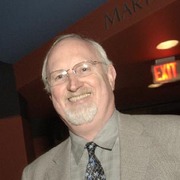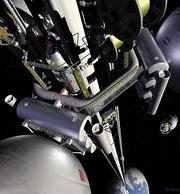It is still possible that you, and I, can reach space in our lifetimes.
It’s still possible thanks to the imagination of Arthur C. Clarke and the hard work of people like Rice researcher Wade Adams.
Dr. Adams, an Air Force graduate, is now director of the Smalley Institute at Rice. This makes him head cheerleader and bottle washer for all those other Rice scientists — professors, graduate fellows, graduate students and (yes, because it’s Rice) even undergrads — working to solve big problems like the space elevator.
A space elevator is just what it sounds like. It’s basically two strips of material, arranged in a giant ellipse, reaching from the surface of the Earth to a point in geosynchronous orbit, 22,300 miles in space. Clarke first conceived of the idea in 1947. In Clarke’s fiction the bottom of the elevator is in Sri Lanka, his home for many decades now. When most Americans talk about it, they think of a place in the mid-Pacific. Whatever.
You pull a cab up, and an identical one comes down. Very small energy
load. Miniscule, compared with flying a space shuttle. Safe, so long as
the string doesn’t break.
Aye, that’s the rub. That strip of material has to be really strong.
Really, really, really strong. At the heart of such a strip of material
would be carbon nanotubes, the long version of the Buckyball Dr.
Smalley helped discover in 1983.
Dr. Adams says we’re about 15% of the way there, in terms of the needed
material strength. We can already use carbon nanotubes to produce
materials that are three times stronger than Kevlar. Not bad. But not
good enough.
Here’s the key quote, though. "We’re making steady progress."
I believe in people like Dr. Wade Adams, and you should too.












